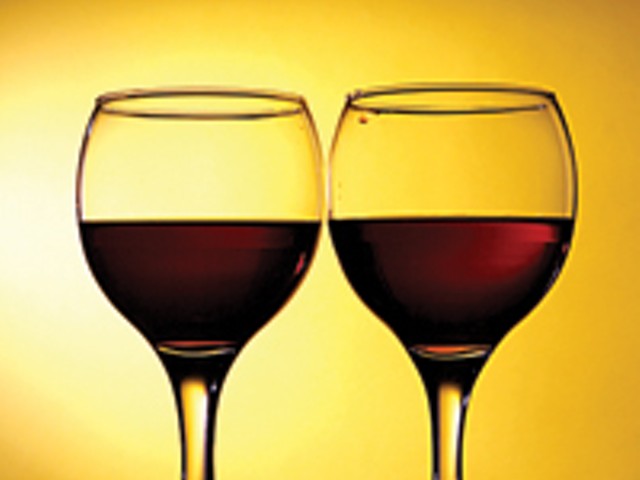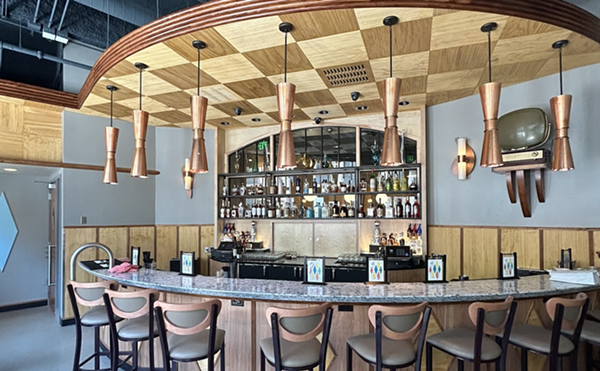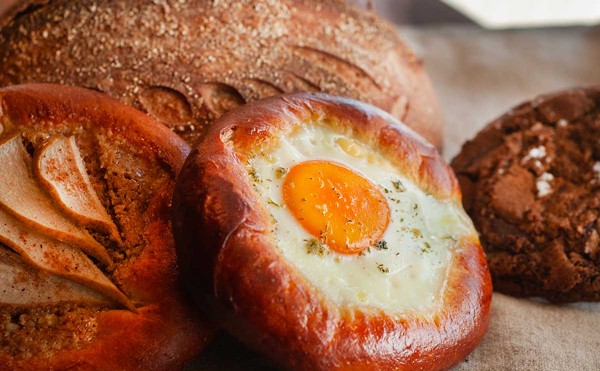Tea is one of the most popular beverages in the world. It's widely available in endless variety, and it's good for you. And according to The Economist, tea consumption is on the rise in the United States, as sales of tea have more than tripled in the last 15 years. But despite tea's growing popularity, what most Americans may be missing is the knowledge needed to select, prepare and truly enjoy it.
When Jim and Janice Girling opened Goldfish Tea in Royal Oak in early February, they aimed to offer people the highest-quality product and an education. Inside their Chinese teahouse, drinking tea stems from an ancient tradition, one that goes deeper than the clever marketing of dunking a bag into boiling water.
The art and decor mirror the simplicity and serenity of an authentic Chinese teahouse. Jim designed the heavy stools, chairs and tables himself, then had them custom-made in China from "reclaimed" or recycled wood called old elm. The rattan sofas and original artwork were hand-selected and shipped from China.
The room radiates a careful appreciation for Chinese tea and culture. But how did two Michigan natives with decade-long careers in the auto industry become so passionate and well-versed about tea?
"Jim and I were both working for Chrysler," Janice says. "We were building a new manufacturing facility just outside of Beijing. We randomly walked into a market and saw a beautiful tea set."
The couple had ventured into a market that had very little tourist traffic. But the place offered some of the finest teas and accessories available to local shoppers.
"We didn't speak Chinese," Jim says. "So there was a language barrier. But we were invited to sit down, like we are sitting here. And we sat for about three hours and sampled I-don't-know-how-many types of tea.
"We felt obligated to buy a bag when we were done. We picked out something we thought we'd like, and we didn't even know what it was. We took it to our translator. It turned out it was a ginseng oolong. We went back there regularly, until finally the owner wanted to meet us."
It was the beginning of a friendship that allowed the Girlings to learn as much as they wanted, from planting and harvesting to serving tea. When they returned to this country, they brought that knowledge and a lot of inspiration back with them.
Jim left his job in advanced manufacturing at Chrysler last summer and made running Goldfish Tea his full-time career.
"My dad spent 34 years at GM," Jim says. "My brothers are all employed in the auto industry. Doing something like this is different from the corporate life. But we feel like we are giving something back to people. People are learning something. It's a different kind of experience."
The Girlings and their staff teach customers the basics through tea tasting or lessons. White, green, oolong and black teas all come from the same plant, camellia sinensis. Each type of tea takes on individual characteristics through the oxidation or drying process. Some teas are even steamed, bruised or cooked to create different aromas and flavors. On a gradient scale, white teas are oxidized the least and black teas the most.
"This is our passion," Jim says. "If a customer walks in and knows nothing about tea, we can ask a few questions and place them. If they're here for health reasons, maybe we will direct them to a white or green tea."
While it's not quite as formal as a traditional Chinese tea ceremony, the tasting lesson gives the tea drinker a full experience. It begins with taking in the aroma of rolled dry gunpowder-green tea leaves, which open like flowers as they undergo an initial steeping inside a clear glass pitcher. The green shoots do a sort of underwater dance called "the agony of the leaves" as they release their distinct color and flavor into the hot water.
The leaves are steeped three times, and the tea is poured into paper-thin porcelain cups that are about the size of a quarter in diameter. The tea guide continues to fill and empty vessels over the open grate of the tea bar, sometimes drenching traditional Chinese pottery miniatures of a lucky three-legged frog or the serene figure of Lu Yu, the revered "sage of tea." The guide moves from the lighter teas to the darker. After the green tea tasting, he fills the bottom of a purple clay pot with an especially aromatic oolong called Honey Phoenix. The semi-oxidized oolong calls for water that is a little hotter than the green varieties.
By the end of the lesson, a very dark specialty tea called Pu'er is prepared and served. Its rich, earthy scent and flavor bring to mind autumn leaves and burning wood.
"There are two key times during the year to purchase tea," Janice says. "One is the spring harvest, one is the fall harvest. Our translator in China contacts our supplier and asks her to set aside some of her best teas for us."
The walls inside the teahouse are lined with hand-selected clay pots, tea sets, accessories, incense burners, travel mugs, tea boats, strainers and more. At the front counter, there's a case of locally made pastries and a small selection of gourmet sandwiches. A thirsty traveler can walk in for a generous lidded go-cup of any of the 40 varieties of Chinese tea, from black Lapsang Souchong to a premium green called Buddha's Eyebrow.
Two teenagers in hooded sweatshirts and sneakers lounge on one of the rattan sofas sharing some quiet conversation over a pot of oolong. An older gentleman wearing a long overcoat and hat comes in to order a cup to go.
Jim's seen everyone from businesspeople to local poets stopping by to check the place out. "We haven't done much advertising or marketing," he says. "We're still trying to figure out who our crowd is."
Goldfish Tea is at 117 W. Fourth St., Royal Oak; 248-541-5252; goldfishtea.com. Open 8 a.m.-10 p.m. Monday-Wednesday, 8 a.m.-midnight Thursday-Saturday, and 9 a.m.-9 p.m. Sunday.
Norene Cashen is a freelance writer. Send comments to [email protected]




